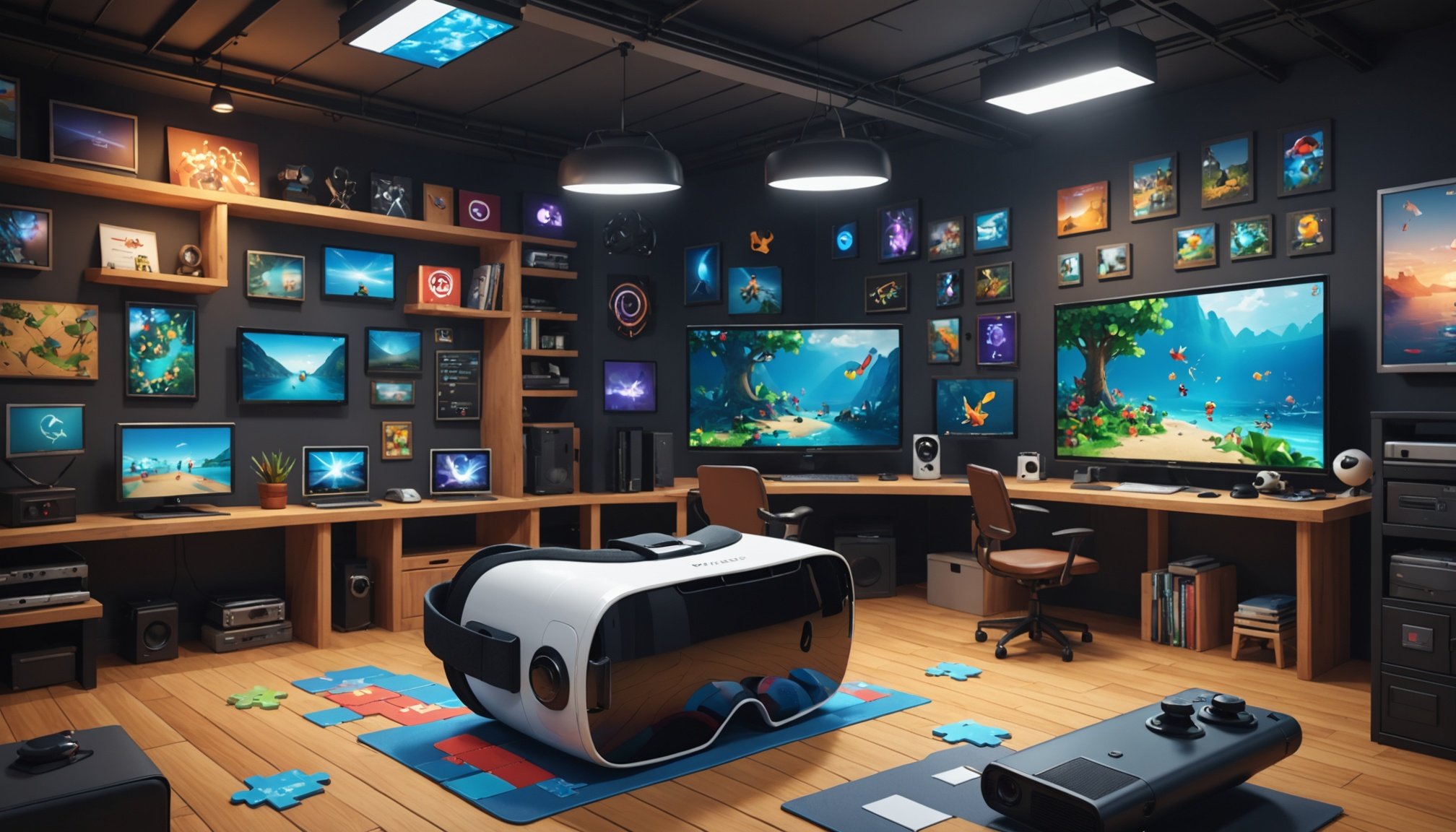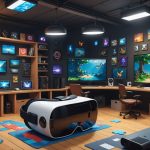Key Principles of User Interface Design in VR
When delving into user interface design for virtual reality (VR), one cannot overlook the importance of user-centered design principles. At its core, this approach ensures VR interfaces are accessible, intuitive, and engaging for users, addressing their needs directly. The aim is to create an immersive environment where users feel comfortable and can interact seamlessly.
Spatial Awareness and Intuitive Navigation
A critical component of VR interfaces is spatial awareness. Users must be able to navigate effortlessly within the virtual space, which relies heavily on intuitive navigation techniques. This involves designing pathways and interaction points that mimic real-world movements or provide logical transitions, enhancing the user’s overall experience.
In the same genre : Exploring the Hurdles of Incorporating Haptic Feedback in Mobile Augmented Reality Games: Insights and Challenges
Adapting Traditional UI Elements
Adapting traditional game design principles to the immersive world of VR is crucial. Traditional UI elements like buttons, menus, and icons often need to be reimagined for VR environments to maintain their functionality without breaking immersion. For instance, floating menus or gesture-based controls may replace conventional menus, offering a user-friendly interface that feels natural within the 3D space.
In summary, successful user interface design in VR involves a blend of innovative approaches that prioritize the user’s experience, ensuring they remain immersed and engaged throughout their virtual journey.
Also to read : Exploring the Advantages of Neural Networks for Real-Time Object Recognition in Augmented Reality Games
Examples of Successful Interfaces in VR Puzzle Games
In the world of VR puzzle games, interface design plays a crucial role in enhancing user experience and immersion. Let’s explore some standout examples and strategic approaches that make these interfaces successful.
One noteworthy example is the VR puzzle game “A Fisherman’s Tale.” This game uses a groundbreaking interface that allows players to interact with a miniature version of their environment in real time. Such an approach offers a unique user interaction design, making it one of the most successful interfaces in its category. The player’s ability to manipulate elements within this miniaturised world showcases the potential of interactive design in virtual reality.
Another success story is “Moss,” where players control a mouse protagonist through a dynamic and responsive interface. The design allows users a seamless transition between observing the environment and interacting with it, illustrating a perfect blend of storytelling and interface utility.
Design case studies in these games reveal that continuous user feedback is pivotal in shaping effective interfaces. Developers often refine their strategies based on player input, leading to tangible improvements and player satisfaction. This iterative process ensures that interfaces not only meet technical requirements but also align with user expectations and preferences.
Tips for Enhancing Player Engagement and Usability
To elevate player engagement and optimize usability, leveraging advanced technological features is key. One effective method is the use of haptic feedback, which immerses players by simulating the sense of touch. By incorporating vibrations and tactile responses, you can create a more interactive and engaging player experience that aligns with in-game actions.
Motion sickness is a common barrier to enjoyment, so strategies to mitigate it are crucial. Ensure comfort by optimizing frame rates and minimizing latency; this will contribute to a smoother visual experience. Additionally, adjusting field-of-view settings and implementing comfort-enhancing features, such as virtual noses or horizon stabilization, can significantly reduce discomfort and increase usability.
Another cornerstone for enhancing player experience is iterative testing. It involves continuously testing and refining game elements. This process allows for practical adjustments based on actual user feedback, ultimately leading to a more polished and engaging game. Establishing user feedback loops is essential to gather comprehensive insights. By actively seeking out and addressing player concerns and suggestions, developers can make informed decisions that enhance both the usability and overall player enjoyment.
Common Pitfalls to Avoid in VR Interface Design
Navigating the world of VR interface design can be a perplexing task due to its potential pitfalls. One prevalent mistake is prioritising aesthetic appeal over functionality, often leading to interfaces that look stunning but are cumbersome to use. Designers should strive to maintain a balance, ensuring that visually engaging elements do not compromise intuitiveness or ease of use.
Another challenge in VR game development is insufficient awareness of the current limitations of VR technology. Ignoring these constraints can result in frustrating player experiences, where the interface seems promising but disappoints in performance or comfort. It’s crucial to understand these boundaries while crafting VR content to align with player expectations and prevent disappointment.
Moreover, design mistakes often stem from a lack of testing with real users. Interfaces might seem flawless in development but can unravel when faced with diverse user interactions. Regular testing and feedback are essential to identify and fix these issues swiftly.
By identifying these common pitfalls and steering clear both technically and creatively, designers can bolster the quality and accessibility of VR interfaces, making the user journey as seamless and delightful as possible.
Integrating Visuals and Expert Insights
In the world of design, the power of visuals cannot be understated. Visuals in design play a crucial role in conveying concepts in a manner that words alone cannot achieve. They break down intricate ideas into more digestible parts, enhancing the overall content value for readers. Think of visuals as the universal language of design, one that transcends barriers and speaks directly to the viewer’s senses.
Expert insights are pivotal in validating and enriching the interpretation of design elements. By integrating quotes from industry veterans, we bolster credibility and lend an authoritative voice to the practices we discuss. These insights offer a window into the thought processes of seasoned professionals, providing guidance and a benchmark for aspiring designers.
Furthermore, the use of diagrams and illustrations stands as a testament to the saying, “A picture is worth a thousand words.” These tools are indispensable for clarifying complex design principles. They transform abstract ideas into tangible realities, making it easier for individuals to grasp and apply design strategies effectively. Embracing both visual elements and expert opinions creates a well-rounded, impactful design narrative.











